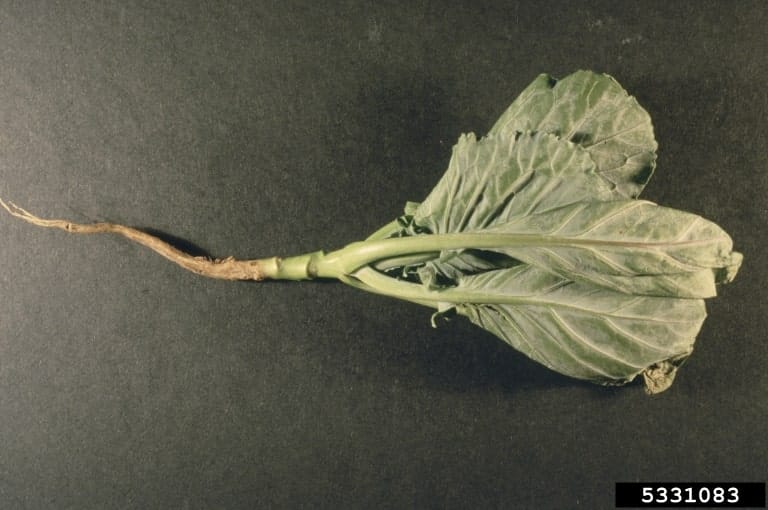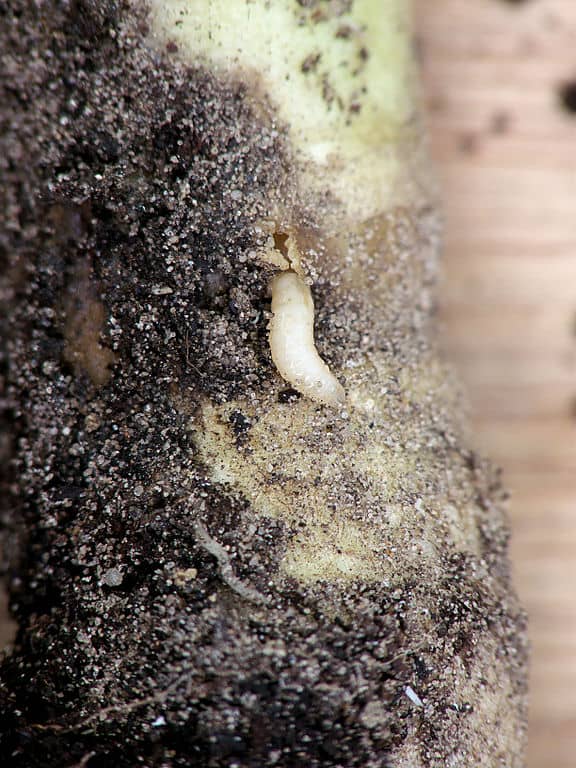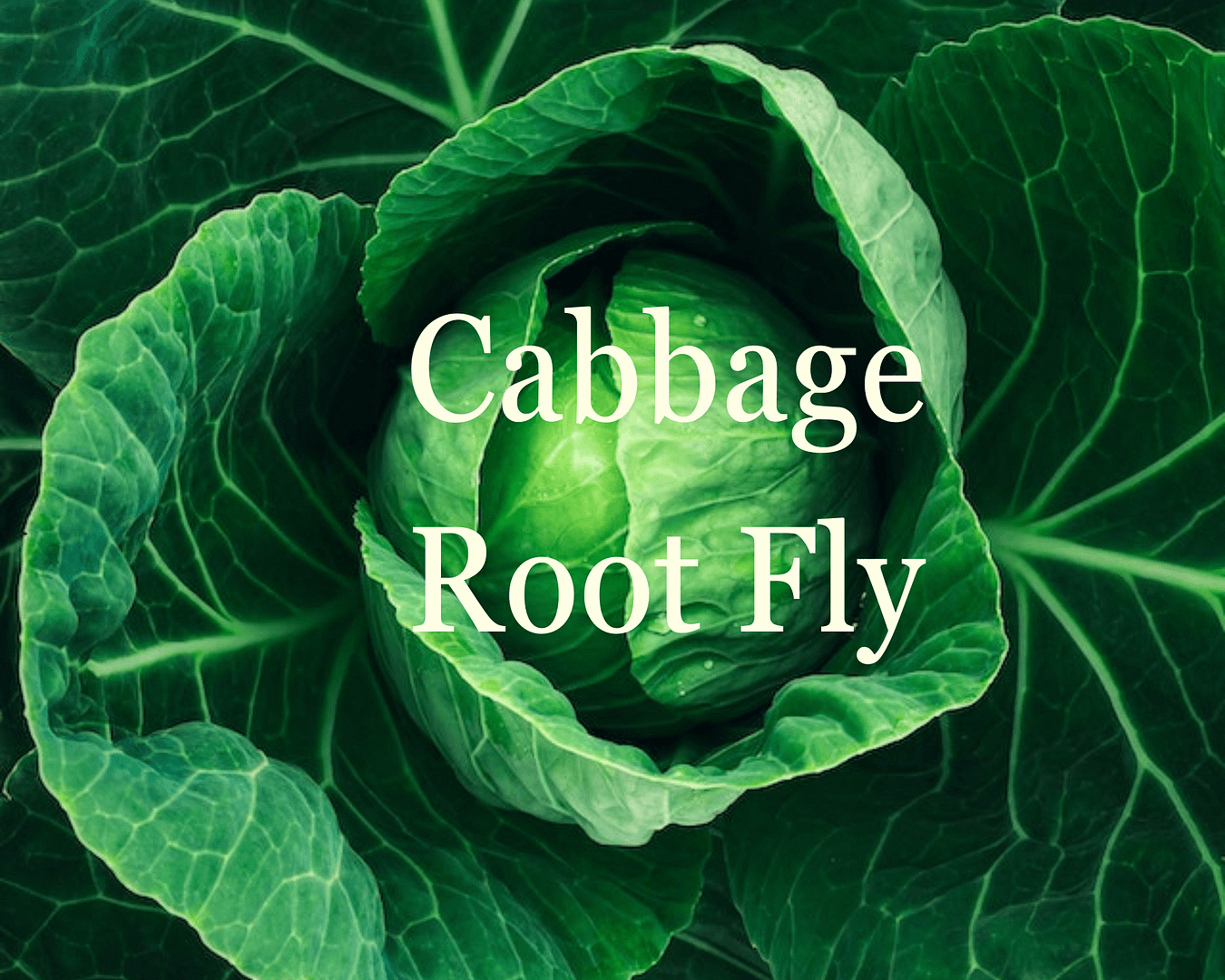This post may contain affiliate links. As an Amazon Associate we earn from qualifying purchases.
The cabbage root fly wouldn’t be so bad if it didn’t give birth to cabbage root maggots. Let’s get rid of them!
The cabbage root fly (Delia radicum) is an insect that looks very much like the typical housefly. It’s as benign as the housefly as well.
It is the fly’s larvae, or maggot, that does all the damage to cabbage, turnip, radish and other crucifers. These tiny creatures eat their way through the vegetable’s root system, killing seedlings and transplants
Cabbage Root Fly Life Cycle
Female cabbage flies lay their eggs near the vegetable plants’ stems. The eggs hatch in April and May and the maggots burrow into the soil to feed on the plants’ roots for the next three weeks.
They then enter the pupa stage and emerge a week later as adult cabbage root flies that typically lay eggs six to seven days after emergence. Yeah, they work that fast!
The cycle continues throughout the growing season with three to four generations until the weather heats up. The cycle may begin again in fall when temperatures drop and the final pupae overwinter in the soil.

Symptoms of a cabbage root fly infestation
The first symptom you may notice is a wilted plant – rather what you might see in a plat that suffering from a nutrient deficiency. If not stopped, the infestation leads to the death of the young crucifer.
When pulled from the soil, the plant either has no roots or those that remain may be black. You may also find some cabbage root fly maggots still attached to, or inside the roots.
Older plants are better able to tolerate light infestations.

Solution
Pest management specialists suggest using an insecticide that contains Steinernema feltiae, beneficial nematodes “… that occur naturally in soil throughout the world,” according to the experts at Arbico Organics.
Since these are living organisms you need to plan the application. S. feltiae should be used within 14 days of purchase and refrigerated at all times before use.
Plan to apply the insecticide on a day when soil temperatures are higher than 42 degrees Fahrenheit.
Aim the application toward the base of the plants and use a sufficient amount of water to soak the product to the plant’s roots.
Read the insecticide label carefully and follow all cautions.
Prevent future cabbage root fly infestations
It’s easy to create a barrier to keep the cabbage root fly maggots off the cabbage’s stem.
Cut a waxed, cardboard milk carton into 2-inch squares. Cut from one edge to the center and use this opening to slide the square around the brassica’s stem. Pat the cardboard onto the soil.
This prevents the cabbage fly maggot from laying its eggs on the soil at the base of the plant.
Till the soil in fall to bring the pupae to the surface. This exposes them to birds and other predators and, while it may not cure an infestation, it helps to cut down on the number of maggots.



